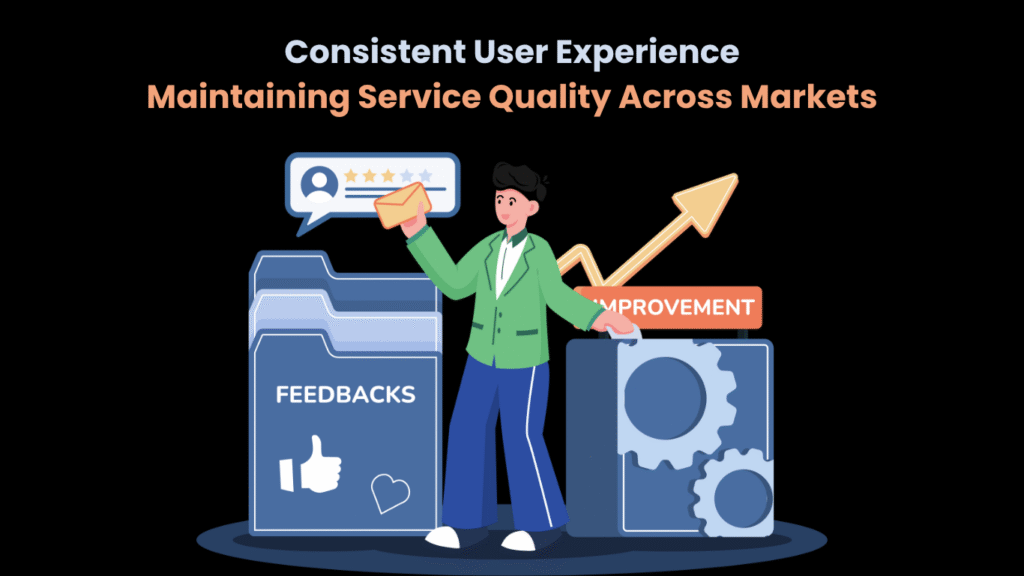Customers demand quick, smooth service regardless of their location worldwide. Whether they shop digitally, consume streaming content, or use mobile platforms, performance issues or service variations cause instant user frustration. Brands achieving worldwide success focus on providing uniform, excellent experiences throughout all markets. Yet, obstacles such as connection delays, regional restrictions, and local network complications often disrupt these goals.
Delivering Uniform Service Quality Across Global Markets
Proxies deliver an efficient approach to managing geographic variations successfully. By directing traffic through region-specific IP addresses, they establish conditions that mirror genuine local user interactions. Below are fundamental tactics illustrating how proxy solutions enable businesses to sustain uniform user experiences across worldwide markets.
1. Deliver Localized Content Without Losing Speed
Fast content delivery matters, especially with content localization. Users in different countries should see pages load quickly and thoroughly. Proxies placed in or near target regions minimize load times by reducing the distance between servers and users. For example, a company serving Southeast Asia can route traffic through a Singapore proxy for quicker access. This ensures that every visitor enjoys responsive site performance regardless of location.
2. Test Performance From the User’s Point of View
Businesses often assume their platforms perform the same everywhere. However, user experiences vary depending on region-specific factors like ISP behavior or mobile network stability. Proxies allow teams to simulate customer experiences from different countries. A team in New York can test their service using a Brazilian proxy to view how content loads there. This approach helps identify and fix regional issues before they affect real users.
3. Avoid Geo-Blocking Problems With Targeted Access
Some content gets restricted by region. This may lead customers to encounter access restrictions or content limitations depending on where they are from. However, proxies with country-specific IP addresses guarantee bypass of restrictions and precise content delivery to users. For example, a German proxy could help Canadian users access local language versions or region-specific features of websites in Germany.
4. Protect Brand Reputation With Reliable Quality
Uneven service delivery threatens brand credibility. If customers in some regions enjoy seamless experiences while others face technical issues or delays, they might abandon the platform for alternatives. Proxies enable companies to maintain direct oversight of their worldwide platform performance. By consistently checking each region with local IPs, companies can catch issues quickly, helping them maintain a strong reputation across all markets.
5. Enable Efficient Load Testing Across Time Zones
Network activity levels change according to local user habits and daily routines. For instance, busy periods in Europe frequently coincide with low-activity times in Asia, creating opposite traffic patterns. Organizations could employ proxy services to simulate genuine user behavior across various time zones while preparing for traffic increases. This method ensures that global systems handle user demand efficiently without experiencing slowdowns. It becomes especially critical during product launch periods or promotional events.
6. Maintain App Functionality Across Regions
Mobile apps sometimes behave differently depending on location-based settings. Push notifications, payment options, and features might not appear the same to all users worldwide. Developers can use proxies to test and monitor these differences during rollouts. For instance, a team launching a feature in India can test the user experience in that specific country using an Indian proxy. This prevents bugs from disrupting usability in key markets.
7. Support Localization Without Guesswork
Localization involves more than just translation. Layouts, font rendering, and even color schemes affect usability in different cultures. Through proxy usage, design and testing teams can examine their products from specific regional user perspectives. Thus, this instant feedback helps teams adjust their interfaces to match cultural and linguistic needs, making experiences feel more organic and user-centered. Using product tour software in tandem with regional testing can further guide users smoothly through localized features, enhancing adoption and satisfaction.
8. Identify and Resolve ISP Throttling Issues
Sometimes, user experience issues come from local ISPs throttling or blocking certain services. Without a regional presence, identifying the root cause is difficult. Proxies allow teams to monitor how traffic behaves in real-world conditions, region by region. If a streaming service loads slowly in Turkey but not in Spain, a Turkish proxy reveals the issue firsthand. This allows for targeted solutions, such as using alternate delivery paths.
9. Ensure Stable Identity With Static IPs
For long-term projects or high-value users, session stability is critical. Switching IP addresses mid-session can disrupt logins or transaction flows. Proxies with static residential IPs help maintain consistency by offering long-lasting identities from specific regions. This makes it easier to support logged-in sessions, user preferences, and secure transactions without disruption.
Read More: How Can CFOs Drive Growth Through Strategic Financial Planning?
Conclusion
Delivering a consistent user experience across global markets requires both insight and infrastructure. Proxies act as invisible guides, helping businesses monitor, adapt, and maintain service quality across regions. They bridge the gap between technical limitations and user expectations by providing localized testing, accurate access, and stable performance. If your brand aims to serve global users without compromise, integrate static residential proxies into your strategy.




